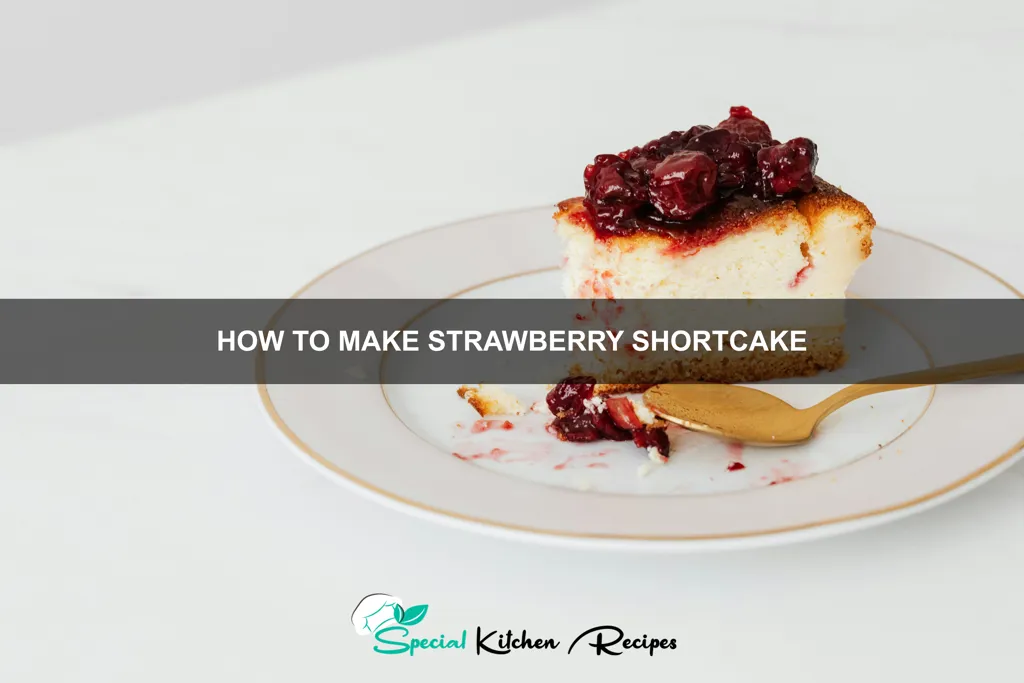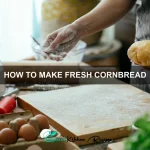Strawberry shortcake, a beloved dessert enjoyed across the globe, boasts a surprisingly rich and layered history. While its exact origins remain debated, the earliest iterations likely emerged in the 18th century in England, featuring biscuits or shortcakes served with cream and berries. These early versions were far from the fluffy, buttery delights we know today; they were more akin to simple, savory biscuits. The transition to the sweeter, more decadent dessert we recognize happened gradually, with variations appearing throughout the 19th century in both England and America. The addition of strawberries solidified its popularity, particularly in the United States, where abundant harvests of the juicy fruit provided the perfect complement to the delicate shortcakes.
The rise of strawberry shortcake in the United States is closely intertwined with the development of baking powder in the late 19th century. This leavening agent allowed for the creation of lighter, fluffier biscuits, significantly changing the texture and appeal of the dessert. By the early 20th century, strawberry shortcake had become a staple in American cookbooks and kitchens, particularly during the summer months when strawberries were in season. Its widespread popularity is reflected in countless recipes, regional variations, and its enduring presence at picnics, barbecues, and countless other celebrations. In fact, according to a recent survey, strawberry shortcake ranks among the top 10 favorite desserts in the United States, demonstrating its continued cultural relevance.
Beyond its deliciousness, strawberry shortcake holds a special place in American culture. It’s often associated with nostalgia, childhood memories, and family gatherings. Its bright red color and fresh, sweet flavors evoke feelings of summer and warmth. The dessert has also become a symbol of Southern hospitality and charm, frequently appearing on menus and in celebrations throughout the Southern United States. Furthermore, its versatility allows for countless adaptations; some prefer a sponge cake base, others a biscuit, and the cream can range from whipped cream to a custard-like concoction. This adaptability contributes to its enduring popularity and ensures that every bite is a unique experience.
Ingredients and Measurements
This recipe yields approximately 6 servings of delicious strawberry shortcake. Accurate measurements are crucial for achieving the perfect balance of flavors and textures. Use a kitchen scale for the most precise results, especially when measuring flour and sugar.
For the Biscuits:
- 2 cups (250g) all-purpose flour – Use freshly milled flour for the best results. If your flour is older, consider sifting it to remove any lumps.
- 1/4 cup (50g) granulated sugar – Granulated sugar provides sweetness and helps with browning. Avoid using powdered sugar in the biscuits.
- 4 teaspoons baking powder – Ensure your baking powder is fresh. Old baking powder will result in flat biscuits. Check the expiration date.
- 1/2 teaspoon baking soda – This helps the biscuits rise even higher.
- 1/2 teaspoon salt – Salt enhances the flavors of the other ingredients. Don’t skip this!
- 1/2 cup (113g) unsalted butter, chilled and cubed – Using cold butter is essential for creating flaky biscuits. Cut the butter into small cubes for even distribution.
- 3/4 cup (177ml) buttermilk, cold – Buttermilk adds a tangy flavor and helps create a tender crumb. If you don’t have buttermilk, you can substitute milk with 1 tablespoon of lemon juice or white vinegar added. Let it sit for 5 minutes before using.
For the Macerated Strawberries:
- 2 pounds (907g) fresh strawberries, hulled and sliced – Choose ripe, but firm strawberries for the best flavor and texture. Avoid using overripe or bruised strawberries.
- 1/2 cup (100g) granulated sugar – Adjust the sugar amount based on the sweetness of your strawberries.
- 2 tablespoons lemon juice – Lemon juice enhances the strawberry flavor and prevents browning.
For the Whipped Cream (Optional, but highly recommended!):
- 2 cups (473ml) heavy cream, ice cold – Using ice-cold cream is key to achieving stiff peaks.
- 1/4 cup (50g) powdered sugar – Powdered sugar dissolves easily and creates a smooth, sweet whipped cream.
- 1 teaspoon vanilla extract – Vanilla extract adds a lovely aroma and complements the strawberry flavor.
Note: All measurements are approximate. Feel free to adjust the sweetness and tartness to your liking.
Strawberry Preparation (Washing, Hulling, Slicing)
Properly preparing your strawberries is crucial for a delicious strawberry shortcake. Begin with selecting ripe, but firm strawberries. Avoid berries that are overly soft or bruised, as they’ll easily fall apart during handling. For this recipe, we’ll assume you’re using approximately 2 pounds (900g) of strawberries.
First, thoroughly wash the strawberries. Gently rinse them under cool, running water. A colander is ideal for this step. Avoid soaking them for extended periods, as this can make them watery. Gently agitate the berries in the colander to remove any dirt or debris.
Next, it’s time to hull the strawberries. This involves removing the green leafy tops. You can use a small paring knife or a specialized strawberry huller for this task. If using a knife, carefully cut away the green tops, being mindful not to cut too deeply into the fruit itself. A huller is quicker, but a sharp knife offers more control and prevents waste.
Once hulled, you’ll need to slice the strawberries. The size of your slices will depend on your preference. For a classic strawberry shortcake, aim for slices that are about 1/4 inch (6mm) thick. This size provides a pleasing balance of texture and visual appeal. Consistency in slicing is key for even cooking and a beautiful presentation on your shortcake.
Avoid slicing the strawberries too far in advance. Cut them just before you’re ready to assemble the shortcake. This will help prevent them from releasing excess moisture and becoming mushy. If you must prepare them ahead, store them in an airtight container in the refrigerator, but keep in mind they may release some juice.
After slicing, you can gently toss the strawberries with a bit of granulated sugar (about 1/4 cup for 2 pounds of strawberries). This will help draw out some of their juices and enhance their flavor. Let the strawberries sit for about 15-20 minutes to allow the sugar to work its magic. You can also add a squeeze of lemon juice (about 1 tablespoon) to help brighten their color and flavor, preventing browning.
With your strawberries washed, hulled, sliced, and sweetened, you’re ready to move on to the next step in creating your delicious strawberry shortcake!
Biscuit Dough Preparation (mixing, kneading, shaping)
Making perfect biscuits for your strawberry shortcake starts with the dough. We’ll be making a classic, flaky variety. Begin by preheating your oven to 450°F (232°C). This high temperature ensures a light and airy biscuit. A hot oven is crucial for proper rising.
In a large bowl, whisk together 2 cups (250g) of all-purpose flour, 2 tablespoons (24g) of baking powder, 1 teaspoon (6g) of sugar, and 1/2 teaspoon (3g) of salt. Ensure the baking powder is fresh for optimal leavening. Old baking powder will result in flat biscuits.
Cut in 1/2 cup (113g) of cold, unsalted butter using a pastry blender or your fingertips. Work quickly and efficiently, keeping the butter as cold as possible. The goal is to create pea-sized pieces of butter throughout the flour mixture; this is key to achieving a flaky texture. Overmixing at this stage will result in tough biscuits.
In a separate small bowl, whisk together 1 cup (240ml) of cold buttermilk. Using cold buttermilk is essential for tender biscuits. Slowly pour the buttermilk into the flour mixture, mixing gently with a fork just until the dough comes together. Do not overmix; a few lumps are perfectly acceptable. Overmixing develops the gluten in the flour, resulting in tough biscuits.
Lightly flour a clean work surface and gently turn the dough out onto it. Pat the dough to about 1-inch thickness. Avoid kneading the dough; this will also develop gluten and lead to tough biscuits.
Using a 2-inch biscuit cutter or a sharp knife, cut out biscuits. Press the cutter straight down; twisting will seal the edges and prevent proper rising. Reroll any scraps and cut out more biscuits. Place the biscuits onto an ungreased baking sheet.
Bake for 12-15 minutes, or until the biscuits are golden brown and sound hollow when tapped on the bottom. Keep a close eye on them during the last few minutes as ovens can vary. Let the biscuits cool slightly before splitting and serving with your delicious strawberry shortcake filling.
Professional Tip: For extra flaky biscuits, brush the tops with a little melted butter before baking.
Baking the Biscuits
Preheat your oven to 450°F (232°C). This high temperature is crucial for achieving light and fluffy biscuits. A lower temperature will result in dense, tough biscuits. Ensure your oven is properly preheated before placing the biscuits inside; this is key to their success.
Place the biscuits onto an ungreased baking sheet. Spacing them about 1 inch apart allows for even baking and prevents them from sticking together. Avoid overcrowding the baking sheet, as this will trap steam and lead to soggy biscuits.
Bake for 12-15 minutes, or until the biscuits are golden brown on top and sound hollow when tapped on the bottom. Baking time may vary slightly depending on your oven and the size of your biscuits. Start checking for doneness around the 12-minute mark. Every oven is different, so keep a close eye on them during the last few minutes to prevent burning.
The golden-brown color is a good indicator of doneness, but the sound test is equally important. Gently tap the bottom of a biscuit; if it sounds hollow, it’s ready. If it sounds dense, it needs a few more minutes in the oven. Avoid overbaking, as this will result in dry, hard biscuits.
Once baked, immediately remove the biscuits from the baking sheet and place them on a wire rack to cool slightly. This prevents them from continuing to cook from the residual heat trapped underneath. Allowing them to cool slightly before splitting and serving will prevent them from crumbling excessively.
For perfectly even baking, consider using a baking stone. A baking stone retains heat exceptionally well, leading to more uniformly baked biscuits with a crispier bottom. If you don’t have a baking stone, a regular baking sheet will work just fine, but keep a closer eye on the biscuits to prevent burning.
Remember: The key to perfect biscuits is a hot oven, properly spaced biscuits, and careful monitoring of baking time. Don’t be afraid to experiment slightly with baking time to find what works best in your oven.
Whipped Cream Preparation (Whipping Technique, Sweetness Level)
Achieving perfectly whipped cream is crucial for a delightful strawberry shortcake. The texture should be light, airy, and not overly sweet, complementing the sweetness of the strawberries and cake. We’ll guide you through the process, ensuring your whipped cream is the star of the show.
Start with chilled ingredients: This is paramount. Cold heavy cream whips up to a much greater volume and holds its shape better than warm cream. Chill your heavy cream in the refrigerator for at least 30 minutes before whipping. A cold bowl and whisk (or mixer attachments) also help.
Use the right equipment: A stand mixer is ideal for large batches, providing consistent whipping. If using a hand mixer, ensure it’s powerful enough to properly incorporate air. A whisk can be used for small quantities, but requires more effort and arm strength. A clean, grease-free bowl is essential to prevent the cream from separating.
Sweetness level: The amount of sugar you add depends on your preference and the sweetness of your strawberries and shortcake. We recommend starting with 2 tablespoons of powdered sugar per cup of heavy cream. This provides a subtle sweetness. Taste and adjust accordingly. If your strawberries are particularly tart, you may want to increase the sugar slightly. Granulated sugar can be used, but powdered sugar dissolves more readily and creates a smoother, less grainy texture.
Whipping technique: Begin by whipping the heavy cream on a low speed. Gradually increase the speed as the cream begins to thicken. Avoid over-whipping, as this can result in a heavy, butter-like consistency. You’ll know it’s ready when soft peaks form—when you lift the whisk, the peaks will droop slightly. If you continue whipping past this stage, you’ll reach stiff peaks, which are too firm for strawberry shortcake. Gentle folding is key once the sugar is incorporated to maintain the airy texture.
Measurements and Quantities (for approximately 2 cups of whipped cream):
- 1 cup (240ml) heavy cream, well-chilled
- 2 tablespoons powdered sugar (or to taste)
- 1 teaspoon vanilla extract (optional, but highly recommended)
Troubleshooting: If your cream doesn’t whip properly, it may be due to warm ingredients, old cream, or a dirty bowl. Ensure everything is thoroughly chilled and your equipment is clean. If the cream is already separating as you whip, it’s likely too late to salvage it. Start over with fresh, cold ingredients.
Assembly of the Shortcake (Layering, Presentation)
With your freshly baked shortcakes and macerated strawberries prepared, it’s time to assemble the delightful dessert. The key to a perfect strawberry shortcake lies in careful layering and a touch of elegance in presentation. We’ll be building individual shortcakes, but the principles apply to larger versions as well.
Begin by selecting your serving plates or dishes. White plates provide a beautiful contrast to the vibrant red strawberries and golden shortcake. Consider using small dessert plates for individual servings, or larger platters if assembling a larger shortcake for sharing.
Take one shortcake biscuit and gently place it on the plate. Avoid pressing down too hard, as this can crush the delicate texture. Aim for a centered placement for a balanced aesthetic. The size of your shortcake will determine the amount of filling you’ll use, but a good guideline is to use approximately 1/4 cup of the macerated strawberries for a standard-sized biscuit.
Carefully spoon the macerated strawberries onto the shortcake base, distributing them evenly to avoid overfilling in one area. Avoid piling the strawberries too high, as this can make the shortcake messy and difficult to eat. A gentle mound is sufficient.
Next, you’ll add the whipped cream. Use a piping bag fitted with a large round tip for a professional look, or simply spoon it on top of the strawberries. Approximately 2-3 tablespoons of whipped cream is ideal for a standard-sized biscuit. Again, avoid overfilling. Aim for a generous layer that complements the strawberries without overwhelming the shortcake.
For the final touch, consider adding a few fresh, whole strawberries for garnish. A single, perfectly ripe strawberry placed in the center of the whipped cream adds a touch of elegance. You can also sprinkle a dusting of powdered sugar over the top for an extra touch of sweetness and visual appeal.
Repeat this layering process for each shortcake. Consistency is key for a visually appealing presentation; make sure each shortcake has a similar amount of filling and garnish. Once assembled, serve immediately for optimal enjoyment. The shortcakes are best enjoyed fresh, while the biscuits are still slightly warm and the whipped cream is cold and fluffy.
Professional Tip: If you’re short on time, you can assemble the shortcakes ahead of time and store them in the refrigerator, but add the whipped cream just before serving to maintain its fluffy texture and prevent the shortcakes from becoming soggy.
Recommendations
For the best strawberry shortcake experience, we recommend using fresh, ripe strawberries. Their sweetness will enhance the overall flavor profile. Avoid using overripe strawberries as they can become mushy and affect the texture of the shortcake. If fresh strawberries are unavailable, frozen strawberries can be used; however, make sure to thaw them completely and drain excess moisture before using.
Serving Suggestions: This delightful dessert is best served immediately after assembly. For an extra touch of elegance, dust the shortcake with powdered sugar before serving. You can also add a dollop of whipped cream or a scoop of vanilla ice cream to complement the strawberries and biscuit. A light drizzle of honey or a sprinkle of fresh mint leaves can also elevate the presentation and taste.
Storage: Leftover shortcake should be stored in an airtight container in the refrigerator. It’s best consumed within 1-2 days for optimal flavor and texture. The biscuits and strawberries can be stored separately; assemble the dessert just before serving.
Complementary Dishes: Strawberry shortcake pairs wonderfully with a light and refreshing beverage such as iced tea, lemonade, or a fruit-infused water. Consider serving it alongside a scoop of vanilla bean ice cream or a light fruit salad for a complete dessert experience. For a more balanced meal, a simple green salad with a light vinaigrette would be a wonderful complement.
Nutritional Information (Approximate per serving, based on a recipe yielding 6 servings): Calorie count will vary depending on the specific ingredients and portion sizes used. However, a typical serving might contain approximately 350-450 calories. This includes carbohydrates from the biscuits and strawberries, fats from butter and cream (if used), and some protein. The exact breakdown of macronutrients (carbohydrates, fats, and proteins) will vary based on recipe specifics. For precise nutritional information, we recommend using a nutrition calculator with your specific recipe ingredients and quantities.
Important Note: These are approximate values. The actual nutritional content may vary depending on the specific ingredients and their quantities used in your recipe. For detailed nutritional information, we recommend using a nutrition calculator and inputting the exact ingredients and amounts used.





